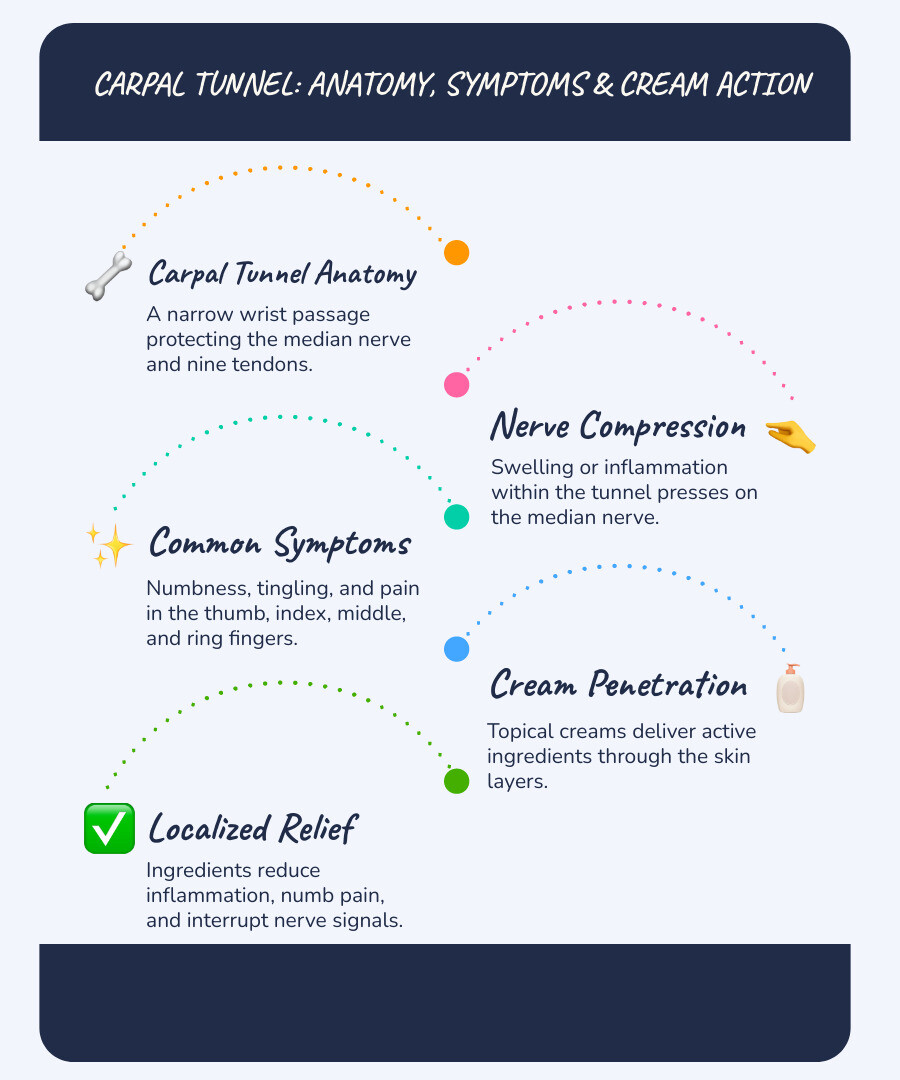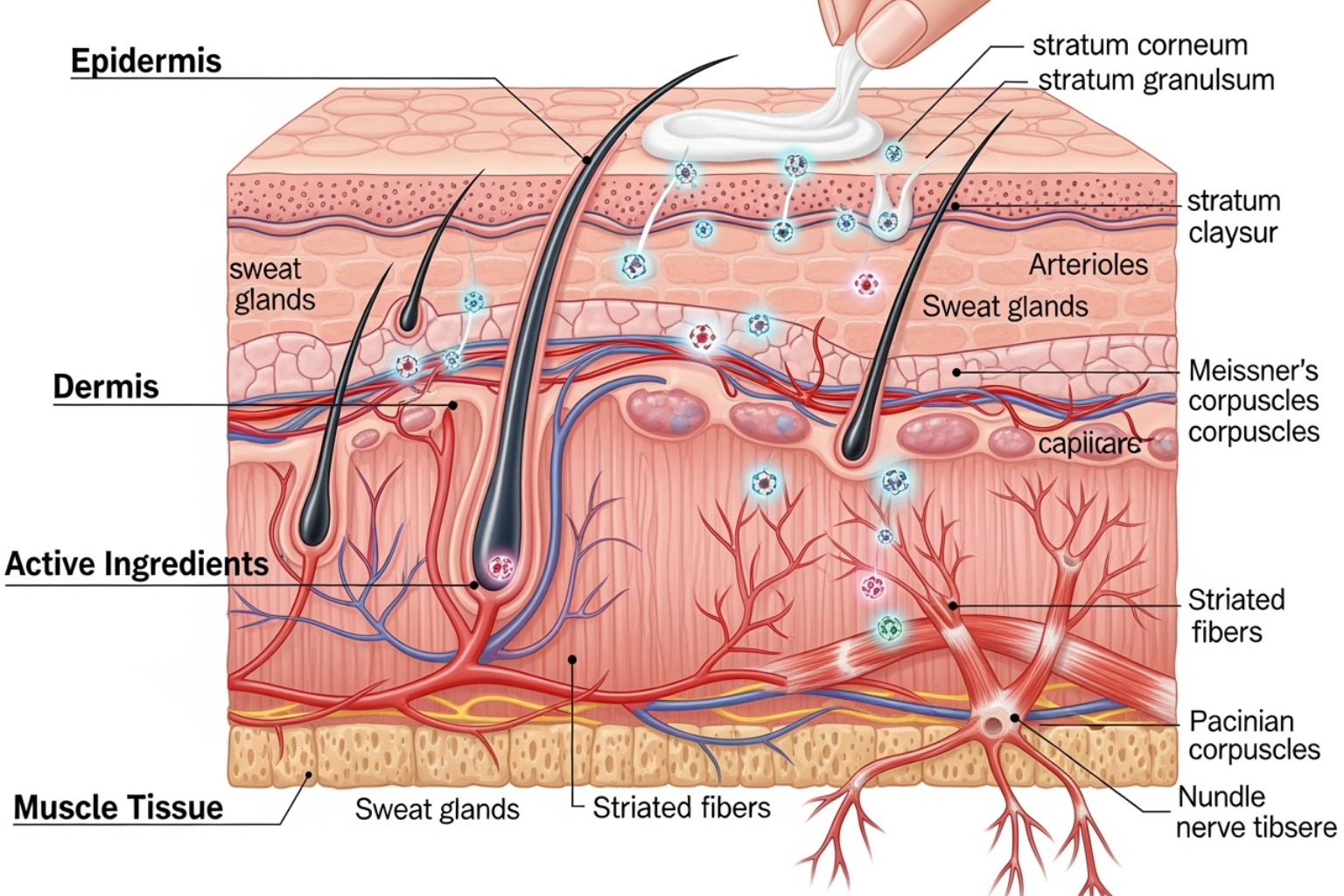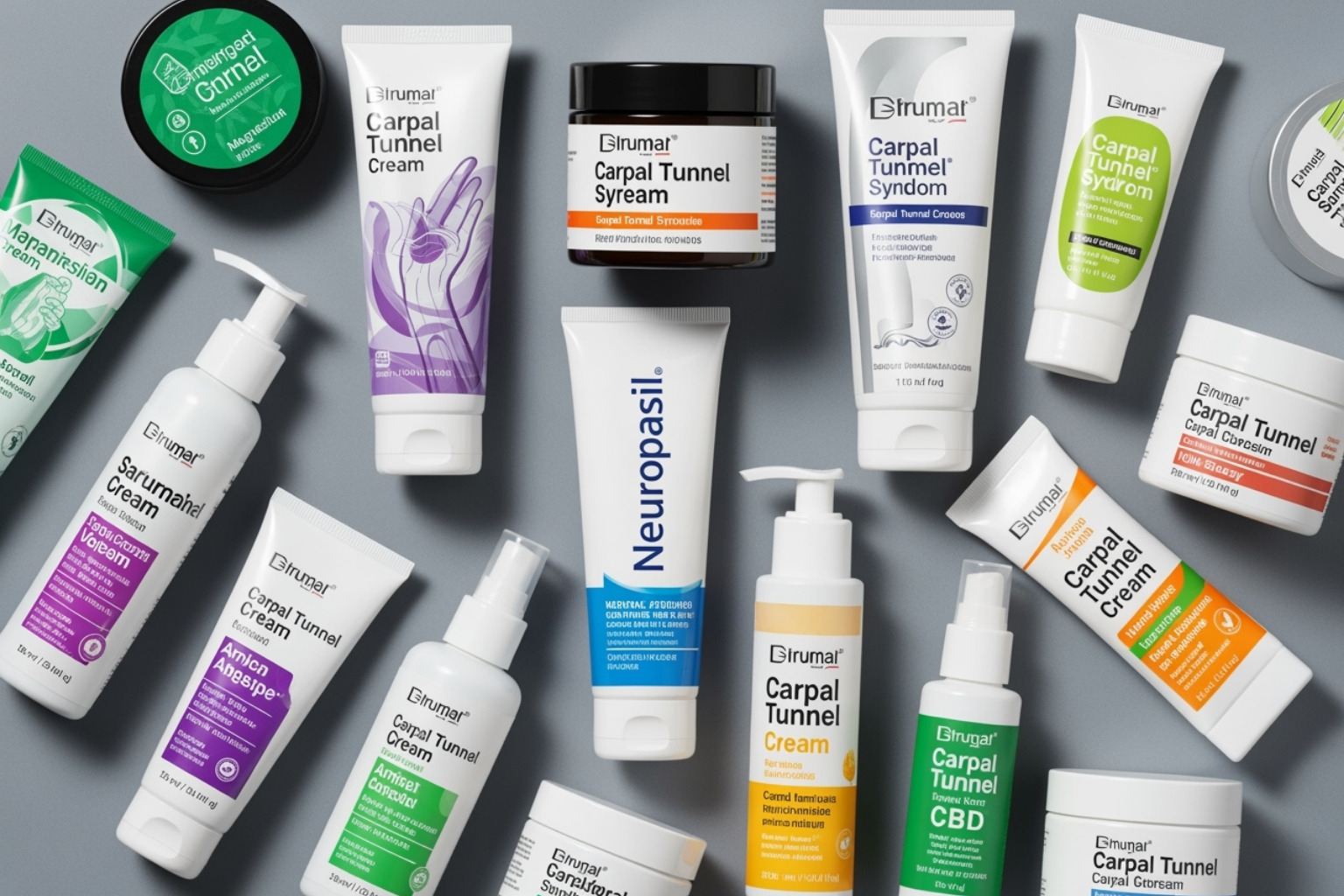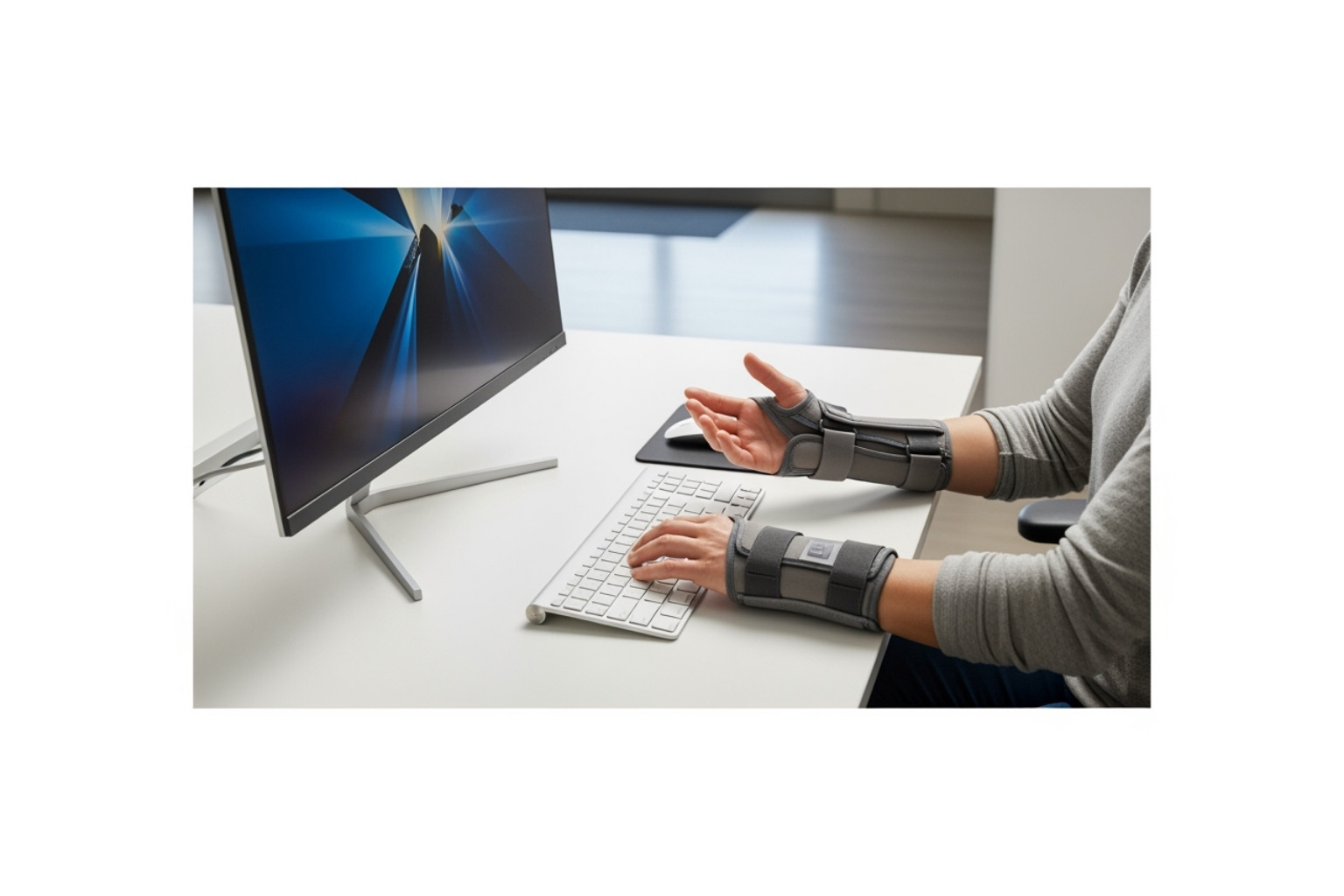Understanding Carpal Tunnel Syndrome and Pain Relief Options
Carpal tunnel cream offers targeted relief for one of the most common workplace injuries. This condition occurs when the median nerve gets compressed as it passes through the carpal tunnel in your wrist, causing pain, numbness, and tingling in your hand and fingers.
Quick Answer for Carpal Tunnel Cream:
- Best ingredients: Menthol (cooling relief), Aloe (soothing), and other natural anti-inflammatories.
- Application: Apply to the palm-side of the wrist and fingers up to 4 times daily.
- Relief time: Menthol works in minutes; other ingredients provide longer-term benefits.
- Best for: Mild to moderate symptoms as part of a comprehensive treatment plan.
- Not a cure: Provides symptom relief but doesn't fix the underlying nerve compression.
According to the National Institute of Neurological Disorders and Stroke, women are three times more likely to develop carpal tunnel syndrome than men. What starts as occasional tingling can progress to constant numbness and weakness that interferes with daily tasks.
Many people with carpal tunnel symptoms turn to topical creams as a first line of defense. These products deliver active ingredients through the skin to reduce inflammation, numb pain, and provide cooling relief with fewer systemic side effects than oral medications.
While carpal tunnel creams provide significant symptom relief, they work best as part of a broader approach that includes proper ergonomics, wrist splinting, and targeted exercises.
I'm Tony Enrico, and through my work with Neuropasil's advanced pain relief formulations, I've seen how the right combination of natural ingredients like menthol, aloe, and urea can provide fast-acting, long-lasting relief when applied correctly.

How Topical Creams Provide Relief
When carpal tunnel syndrome strikes, the familiar ache and tingling can make simple tasks feel impossible. This is where carpal tunnel cream becomes an ally, offering a targeted approach to get right to the source of your discomfort.
Think of your carpal tunnel as a narrow highway for the median nerve. When inflammation causes a traffic jam, it puts pressure on this nerve. Carpal tunnel cream works by delivering active ingredients directly through your skin to address this congestion.
The cream penetrates your skin, creating a concentrated dose of healing ingredients at the site of nerve compression. This is a more direct approach than an oral pill that travels through your entire system.
Reducing inflammation is a primary goal. Many creams contain anti-inflammatory agents that calm the swollen tendons pressing on your median nerve, giving it more breathing room and easing tingling and numbness.
Alleviating pain happens through several pathways. Some ingredients create cooling or warming sensations that distract your nervous system from the discomfort. This targeted relief means you get maximum benefit with minimal systemic impact.
How They Differ from Oral Medications
While oral pain medications can be effective, they come with trade-offs. When you swallow a pill, the active ingredients enter your bloodstream and travel throughout your body. This systemic approach can be useful for widespread pain, but it also means your internal organs process the medication. For localized pain like carpal tunnel, this can be overkill.
Carpal tunnel cream offers a smarter alternative with fewer systemic side effects. Because you apply the medication directly to your skin, significantly less of it enters your bloodstream. This means you can get relief without putting unnecessary stress on other organs. Why treat your whole body when the problem is in your wrist?
Types of Creams
Not all carpal tunnel creams are created equal. You'll generally find two main categories:
Pain relief creams focus on immediate comfort, often featuring ingredients that create a cooling sensation to distract from pain signals. These are great for quick relief from acute symptoms.
Anti-inflammatory gels take a different approach, incorporating ingredients to tackle the root cause of inflammation. These may take longer to show results but work on the underlying swelling that causes nerve compression.

Benefits
The advantages of using a carpal tunnel cream are compelling. Most people find they are fast-acting, especially formulations with menthol, which can provide noticeable relief within minutes. The localized treatment aspect is a major plus, concentrating active ingredients right where the nerve compression is happening. Perhaps most importantly, over-the-counter access makes these creams incredibly convenient for managing symptoms as they arise.
Potential Drawbacks
It's important to be realistic about what carpal tunnel cream can and cannot do. These products offer temporary relief rather than fixing the underlying structural problem. The cooling sensation from menthol, for example, typically lasts about 15-20 minutes, which may require reapplication. A potential concern is that consistent use might mask worsening symptoms, so it's crucial to monitor your condition. Skin sensitivity is another consideration, so it's wise to test a small area first. Most importantly, topical creams are not a cure for the underlying cause; they manage symptoms but don't address the anatomical issues causing nerve compression.
Key Ingredients in a Quality Nerve Pain Relief Cream
The effectiveness of a carpal tunnel cream lies in its ingredients. Menthol is often a star player, creating a cooling sensation that provides immediate relief by interrupting pain signals. Research shows that topical menthol can significantly reduce carpal tunnel pain, though the effects are temporary.
Many quality formulations also incorporate natural extracts for complementary benefits. Aloe Vera brings its legendary soothing properties to calm irritated skin and reduce inflammation. Urea helps with skin hydration and improves how other ingredients penetrate your skin. Arnica is another popular botanical, traditionally used for its anti-inflammatory effects on muscle aches and sprains.
Our Top Picks for Carpal Tunnel Cream
Finding the right carpal tunnel cream can feel overwhelming. We've evaluated products based on ingredient quality, user reviews, and expert formulation to help you find effective, targeted relief.
When we evaluate a carpal tunnel cream, we look beyond marketing claims to the science behind the ingredients. We also consider whether medical professionals were involved in the formulation, as your well-being deserves products that are thoughtfully created and tested.
Neuropasil
We're genuinely excited to share Neuropasil with you - our nerve pain relief cream that represents everything we believe effective pain management should be. It's a carefully crafted solution born from understanding what people with nerve and muscle pain truly need.
Our formula combines three powerhouse natural ingredients. Menthol provides instant cooling relief that helps interrupt nagging pain signals. Aloe brings its legendary soothing properties to calm irritated tissues and reduce inflammation. And Urea acts as the perfect teammate, improving skin hydration while helping the other ingredients penetrate deeper.
What makes Neuropasil special is also what's not in it. We're proud to offer a paraben-free formulation that's gentle on your skin while being tough on pain. Being doctor-formulated means you can trust that real medical expertise went into creating this cream.
Neuropasil works fast for nerve pain and muscle soreness, making it perfect not just for carpal tunnel syndrome, but for a whole range of conditions like neuropathy, sciatica, fibromyalgia, and plantar fasciitis. Athletes also love how it helps them recover from sore muscles after intense training.

How to Apply Carpal Tunnel Cream for Maximum Effectiveness
Getting the most from your carpal tunnel cream is about correct application. Proper technique is the bridge between a good cream and genuine relief.
- Start clean: Clean and dry the area before you begin. This removes oils or dirt that can block absorption.
- Be generous: Apply a liberal amount to cover your wrist, palm, and the base of your fingers.
- Massage it in: Use gentle, circular motions until the cream absorbs completely. Focus on the palm-side of the wrist, hand, and fingers where the median nerve travels. This also stimulates blood flow.
- Be consistent: Most creams can be applied up to 4 times per day, but always check the product's instructions. Regular application yields better results than sporadic use.
For safety, do not apply to broken skin, and always wash your hands after application (unless your hands are the treatment area) to avoid getting cream in your eyes or mouth.
Beyond the Cream: A Holistic Approach to Management
Carpal tunnel cream works best when it's part of a bigger picture. The most effective approach combines the targeted relief of topical treatments with practical strategies that address the root cause of the nerve compression.
Wrist splinting is one of the most powerful tools for mild to moderate symptoms. Wearing a splint at night is particularly effective, as it keeps your wrist in a neutral position and prevents the awkward bending that can compress the median nerve while you sleep. According to the Mayo Clinic, conservative treatments like splinting work best if symptoms have been present for less than ten months.
Gentle stretches and exercises can also work wonders. Simple movements help reduce swelling and keep tendons gliding smoothly. Try the wrist flexor stretch (gently pull fingers back toward your forearm for 15-30 seconds) or the prayer stretch (press palms together and lower your hands). Even just shaking your hands can provide surprising relief from stiffness or tingling.
Ice and heat therapy can help when symptoms flare up. Ice can numb pain and reduce inflammation; apply an ice pack for 10-15 minutes. Heat is great for stiffness; a warm bath or heating pad can relax tight muscles and improve circulation.
The real game-changer is making ergonomic adjustments. This doesn't have to be expensive. Simple changes like adjusting your chair height or keyboard position can make a huge difference. Keep your wrists straight when typing and take frequent breaks—even 30 seconds every 15 minutes—to stretch and decompress the nerve. Also, try to avoid gripping objects like your phone or steering wheel harder than necessary.
This holistic approach creates a synergistic effect: your carpal tunnel cream provides relief while splints, exercises, and ergonomic changes address the underlying issues. It's a team effort to get you feeling better.

Frequently Asked Questions about Carpal Tunnel Relief
When dealing with carpal tunnel syndrome, it's natural to have questions. Here are some practical answers to common concerns.
Can carpal tunnel creams be used for prevention?
Carpal tunnel cream is designed for managing symptoms, not for prevention. True prevention focuses on addressing root causes: improving workspace ergonomics, keeping wrists in neutral positions during repetitive tasks, and incorporating regular stretching into your routine. Taking frequent breaks from activities that strain your wrists is far more valuable for prevention than any cream.
How quickly does carpal tunnel cream work?
The speed of relief depends on the active ingredients.
Menthol provides the fastest relief, with its cooling sensation kicking in within minutes. This effect helps interrupt pain signals traveling to your brain. This cooling comfort typically lasts about 15-20 minutes, so reapplication may be necessary.
Other soothing and anti-inflammatory ingredients may take longer to show their full effect. For these, consistent daily use is key to reducing underlying inflammation and achieving long-term comfort.
When should I see a doctor for carpal tunnel syndrome?
This is a critical question. As Harvard Health advises, you should not delay treatment for carpal tunnel syndrome if conservative methods aren't working.
See a doctor if:
- Symptoms persist or worsen despite using creams, splints, and exercises for a few weeks.
- You experience constant numbness that doesn't go away.
- Nighttime symptoms are so severe they disrupt your sleep.
- You notice a loss of hand strength, such as dropping objects or having trouble with buttons.
These are signs of more significant nerve compression that requires medical attention. Untreated carpal tunnel can lead to permanent nerve damage, so early intervention is crucial for better outcomes. A doctor can assess the severity and recommend further treatments if needed.
Conclusion: Taking Control of Your Wrist Pain
Living with carpal tunnel syndrome is challenging, but you are not powerless. You can take active steps to manage your symptoms and reclaim your comfort.
Carpal tunnel cream is one of your most accessible tools. These topical solutions deliver relief exactly where you need it. Whether you choose a menthol-based cream for immediate cooling comfort or one with natural anti-inflammatories to tackle swelling, you are taking a positive step.
The beauty of topical treatments is their targeted approach, focusing healing power on your carpal tunnel area with fewer systemic effects than oral medications.
However, the most successful approach is a comprehensive treatment plan. Pair your carpal tunnel cream with consistent wrist splinting (especially at night), gentle daily stretches, and small but crucial ergonomic adjustments to your workspace. The cream provides immediate relief while these other strategies address the root causes of your discomfort.
Do not ignore persistent symptoms. While natural formulations like Neuropasil provide remarkable relief for nerve and muscle pain, professional medical guidance is essential if your condition doesn't improve. If you experience constant numbness or lose grip strength, consult a healthcare professional. Early intervention can prevent permanent nerve damage.
Taking control of your wrist pain means being informed and proactive. You deserve to live without constant discomfort holding you back.
Find the right nerve and muscle pain relief cream for you and start your journey toward the relief you've been seeking.














